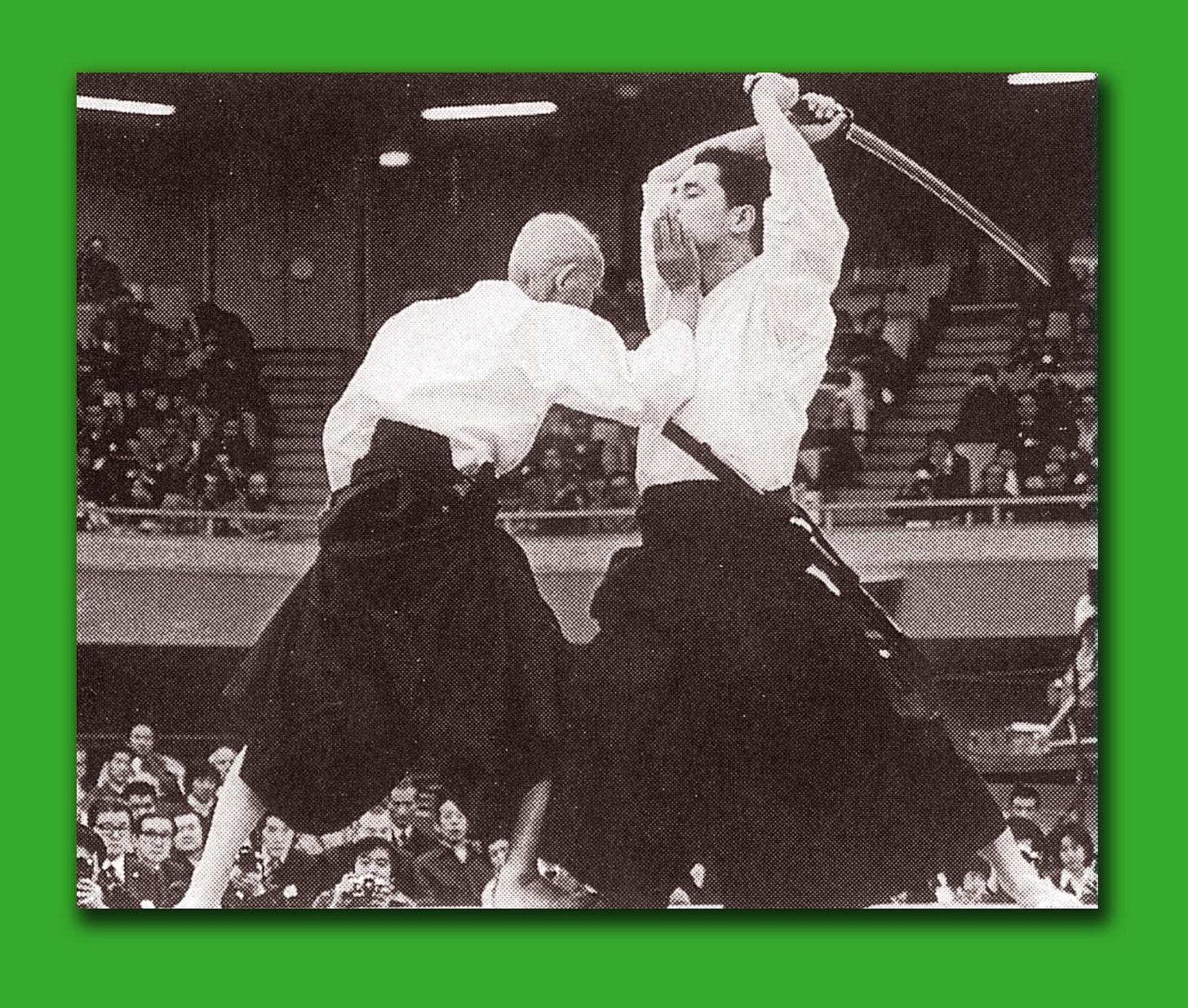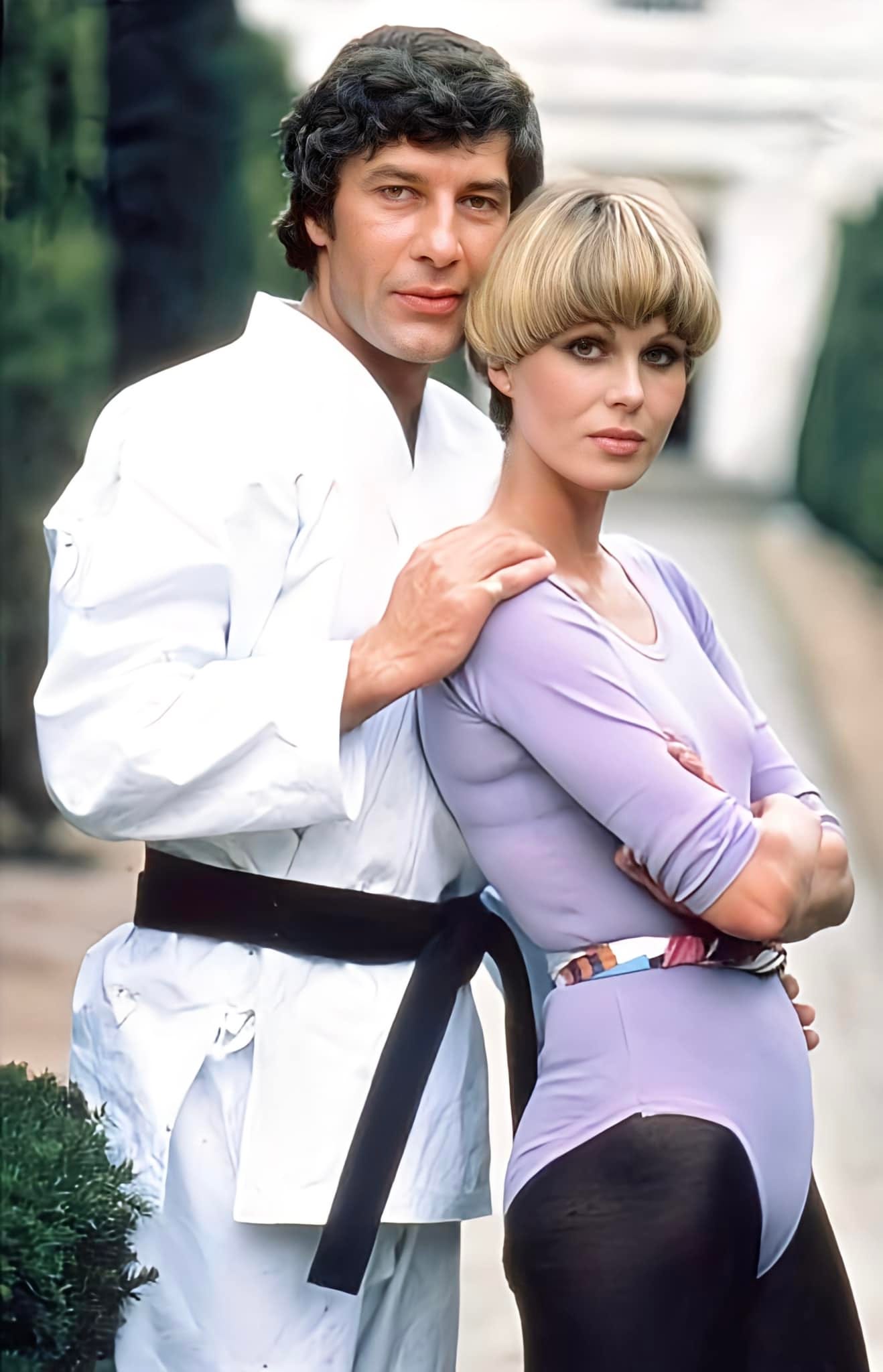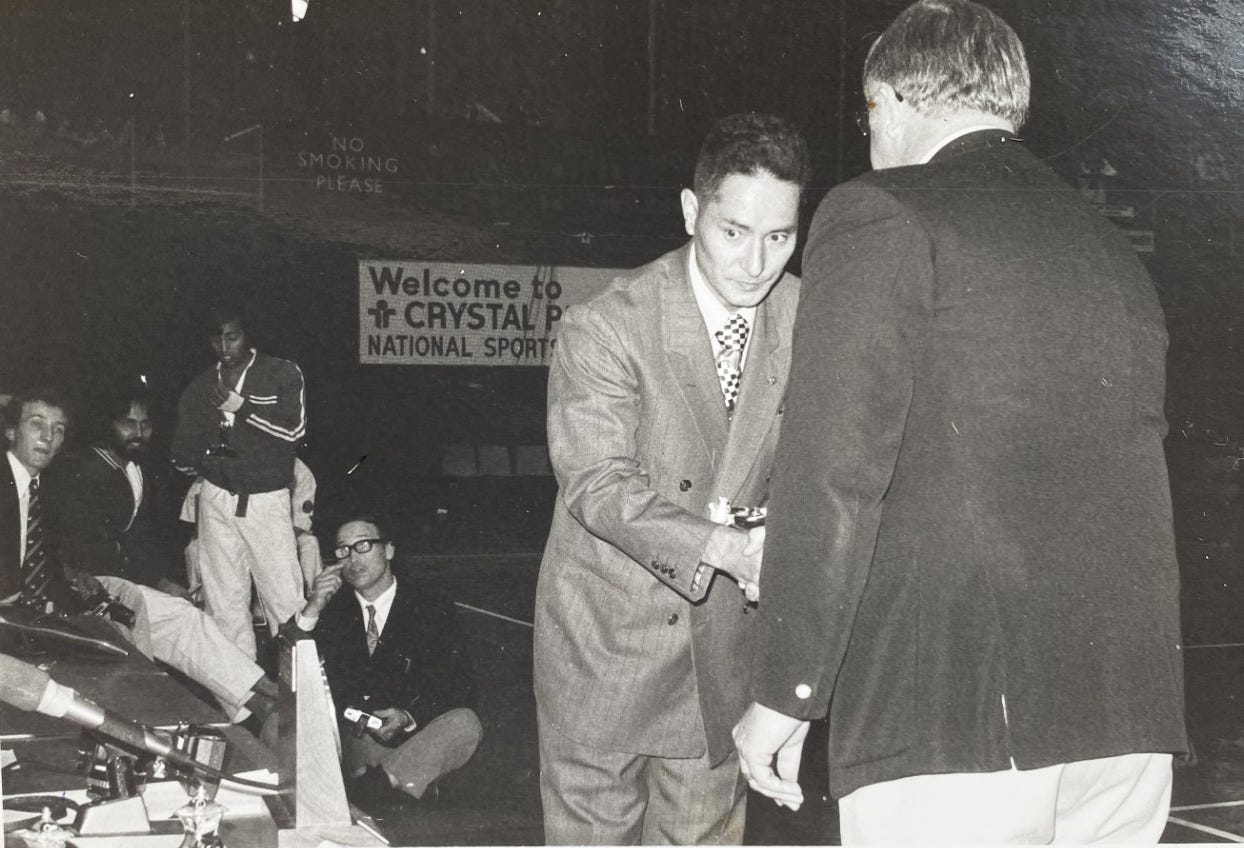Memories of Otsuka Sensei, part 1.
The first part of collection of images and anecdotes around an incident from 1975.
Note to readers: I would really like to link this to my earlier piece about memory. It also comes out of a fondness for oral history. I find it appealing to address the idea of isolating a moment, an event and having more than one witness.
I know that the cynical viewpoint might be; why is he carping on about this same old story yet again? To answer that, refer to what I have written above. Also, I think that the tale adds humanity to Otsuka Sensei’s story; although for him, I would guess it was barely a bump in the road of his very long and purposeful life.
As a last thought; as far as I know, nobody ever asked his son what his view of proceedings were, and now sadly, that opportunity is lost to history.
But, here goes anyway.
The following is my attempt to gather up the threads of this story to include not only my memories, but also the memories (and images) of other people who were there (which will feature in part 2).
My thanks to Alex Waith, Steve Byfield, Dave Shephard and David Allsop.
The setting.
In 1975, on Saturday 13th of September, Otsuka Hironori, founder of Wado karate was guest of honour at the United Kingdom Karate-Do Wado Kai championships in the national sports centre of Crystal Palace, London.
On that day I was competing in the junior kumite as a 17-year-old green belt. For everyone who was there it was a huge privilege to be in the presence of greatness. But there was more than one incident in the day which the old grandmaster hadn’t planned for.
The championship.
This was Suzuki Tatsuo Sensei’s premier event in the UKKW calendar. How fitting that it should coincide with Otsuka Sensei doing one of his world tours; (probably the last one he did).
I cannot imagine how exhausting this whirlwind globe-trotting must have been for a man who was eighty-three years old at the time (Otsuka Sensei was born in 1892).
To set the scene; the championships in September every year had grown and grown. For anyone competing you knew you were in for a long day – but this particular event was going to turn out much longer than any of us ever could have predicted.
Crystal Palace.
For people outside of the UK; Crystal Palace as the jewel in the UK sporting crown and always described as our national sports centre was quite an impressive set up, particularly to the eyes of northerners/midlanders, like myself, who normally had to cope with ratty community centres and functions rooms for their karate events.
The main indoor stadium was huge and had tiered seating up two sides and three mezzanine floors, one was as an overspill area; another a cafeteria and bar, while the third was a central spine which looked over both the stadium and the competitive Olympic size swimming pool. The so-called ‘dry side’ where the championships were held was big enough to cope with about 1500 people.
For us, it was a chance to be in the presence of the full resident Japanese team of instructors, and hopefully to be inspired by the demonstrations they treated us to. But, this year it was special. Otsuka Sensei’s presence acted as a magnet to Japanese teachers in Europe, and Suzuki Sensei had an opportunity to show his beloved teacher what had been achieved in the UK in the name of Wado karate.
Otsuka Sensei, followed by Suzuki Sensei on the day. Photo courtesy of Alex Waith.
Additional guests of honour.
There was always a reserved row of seats right at the front of the action for celebrities, officials and other important people.
A couple of the guests of honour looked vaguely familiar to me, there was an actor, Gareth Hunt who I recognised from the TV series ‘Upstairs Downstairs’ and next to him a glamourous blonde who looked like a catwalk model. I assumed she was his girlfriend. It was only later I realised that it was actress and model Joanna Lumley. They were there researching for their roles in the TV relaunch of ‘The New Avengers’ (1976), with Hunt as Gambit and Lumley as Purdey, the face that launched a thousand haircuts; the ‘Purdey Bob’. (From 1976 onwards the pubs in Mansfield were full of girls with ‘that haircut’. Sometimes called ‘the pageboy’, it later evolved into the ‘Lady Di’.).
Gareth Hunt and Joanna Lumley in role for ‘The New Avengers’. I suspect someone had to show him how to tie that belt.
It seemed that Otsuka Sensei didn’t travel over from Japan on his own. Among other Japanese luminaries and officials was also his son, Otsuka Jiro Sensei, who would have been 41 years old at the time.
Otsuka Jiro Sensei. Photo courtesy of Alex Waith.
(Also included in the Japanese entourage were: Tanaka Seigen and Ota Yoshito)
Both father and son appeared in the auditorium dressed formally in well-cut western suits.1
To my eyes, the older master looked frail, but he walked smartly and carried himself with dignity. Naturally, he was introduced to the assembly and ushered to a position of honour to watch over the early rounds of the contest; always with Suzuki Sensei respectfully at his shoulder.
Otsuka Jiro Sensei, Otsuka Hironori Sensei and Suzuki Sensei on the day. Photo credit: Fighting Arts magazine Vol.2 No.5. Photographer; T. Benfield.
Otsuka Sensei pretty much remained in his seat for the whole day. Other Japanese Sensei came up and paid their respects.
In the arena, the rounds and eliminations went on, and the competitors were whittled down, also the crowd seemed to grow as those who had been knocked out in the early rounds added to the seated throng. Myself included. I joined a group up on the tiered seating facing away from the windows, but far enough down to see the action on the various areas.
For every competitor this embroidered badge to commemorate the day. Here is mine – a bit worse for wear.
My own Sensei, David Allsop, seemed to be powering through the eliminations, making good use of his superbly timed gyakuzuki counter; basically, anything that moved into his zone was nailed. I was always envious of his ability to do that, he had the patience of the sniper and it was working well for him that day.
Towards the evening or later afternoon, Otsuka Sensei just seemed to disappear. My thought at the time was that maybe the old gentleman had done his bit and perhaps quietly slipped away, but no. The next time I saw him he had changed into his keikogi and was clearly setting up to treat us to a demonstration.
Otsuka Sensei. Photo courtesy of Alex Waith.
An unexpected interruption.
The order of events slightly blurs in my mind, but, I believe that before the demonstrations could begin, an announcement came over the public address system telling us we had to evacuate the building. No one was to panic, but the police had informed them that there had been a bomb threat, believed to be from the IRA Republicans and the building needed to be searched.2
And, in a very English way, there was no panic, just a resigned grumpiness, made even more sour by the fact that, although it was still light, it was tipping it down with rain.
I say that this must have happened before the demonstrations because I distinctly saw Otsuka Sensei, still in Keikogi but with his suit jacket draped around his shoulders, being politely escorted by other Japanese Sensei.
For us, the only place to shelter was the athletics stadium. We waited under the whatever cover we could find.
There was a low fence and then the running track. A few people decided to do a turn round the track, splashing through the puddles; I mean, how often do you get the chance to run on an international running track?
Eventually, the ‘all-clear’ was given, but only after we had trooped out, trooped in and then requested to, yet again, leave the building. But, by that time the frustration had become too much and a decision was made to just ignore the authorities and crack on with the events (the English flair for truculence wins through yet again).
Next time; the demonstrations, an error in judgement and accounts from witnesses on the day.
Because of the length of this piece I decided to break into two parts. The second and final part will be published tomorrow.
] I was to find out later that Otsuka Jiro, even in Japan, was always known as a smart dresser. In Tokyo, he would wear a dapper brimmed hat at a time when nobody else was considering it.
Although UK people of a certain generation would know about the Irish Republican Army’s campaign of bombing in England; I am aware that youngsters and UK non-residents might not know the context. The top corner of the island of Ireland was historically under British rule, and there was always a move towards unifying the whole of Ireland as an independent state. The later 60’s and 70’s became a flashpoint in the tinderbox of Northern Ireland and the Brits came in with military force. An insurgent separatist Catholic underground army (the IRA) conducted a campaign of bombing, initially in N. Ireland, but they soon realised that one bomb on the ‘mainland’ was worth ten in NI. And so began a series of terrorist events in the larger cities of England. This is the reason why even today, London is one of the most controlled, surveilled cities in the world. On average, a Londoner can expect to be caught on CCTV anywhere between 100 and 300 times a day, depending which hotspots they visit.











Great series on one of the most legendary moments in Wado karate history.